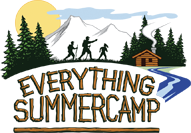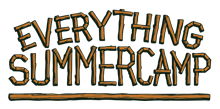Hey, Northerners!
North of the equator, that is…today is the Winter Solstice—a magical day of the year. This day is a reminder from Mother Nature of just how harsh and unforgiving she can be. That’s especially so this time of year the further north you go. We’re located in Northern Wisconsin here at Everything Summer Camp, where Winter Solstices are always cold, dark, and typically covered in ice and snow. But we only scratch the surface of winter brutality!

Some theorize that Stonehenge was built to establish when exactly the Solstices would occur.
This year, we’ll see just under nine hours of daylight in Boyd, Wisconsin (roughly the same amount as New York City). If you travel to Helsinki, Finland, you’ll be getting something shy of six hours of daylight! That’s less than a typical school or workday. And, even worse than that, if you go to Barrow, Alaska, you won’t even see a sunrise!
As you can imagine this cycle made our ancient ancestors pretty nervous with the concern that the sun would continue to grow more and more distant until one day it simply blipped out of sight completely. Without a better scientific understanding of the natural cycles of earth, this seemed like a perfectly reasonable concern.
In the heliocentric model, while the North Pole hadn’t seen a sunrise since October, the South Pole is being showered in nightly sunrays until March. Which is when things here in Northern Wisconsin will start to warm up; it’s time for the planet’s second winter solstice.
It’s easy to be“hemisphere-o-centric”—after all, the vast majority of people on the planet live in the northern hemisphere—but the other side of the planet certainly gets a winter solstice as well. Since Earth’s orbit is tilted on its axis the hemispheres trade off over the course of a year on which one sees direct sun. So,while we’re celebrating our Winter Solstice on December 21, folks south of the equator are seeing their Summer Solstice. They’ll get their Winter Solstice around June 21—when we get our Summer Solstice.
It can be hard to visualize just from reading about it, so I’ve included the most helpful visual I could find.Enjoy as many hours of dayligh t as you can today and stay nice and warm during the dark! As always, thanks for reading!
t as you can today and stay nice and warm during the dark! As always, thanks for reading!
- John



